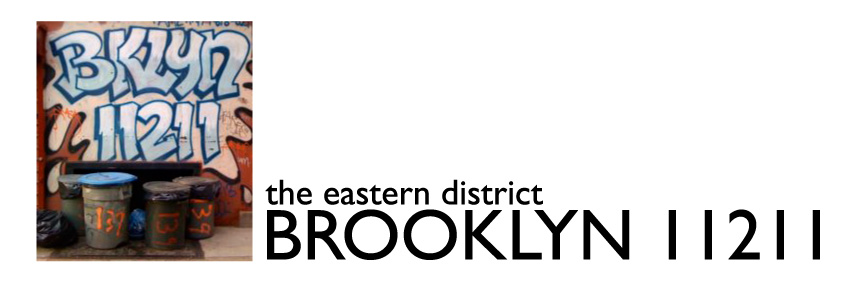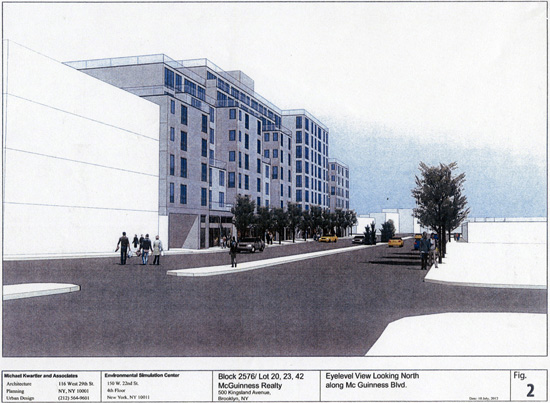Everyone (see below) is reporting that Transmitter Park is finally set to (re)open this Saturday as an actual (as opposed to ersatz) park. Which is great news, and long overdue.
But everyone also seems to be confusing an important detail about the 1.6-acre park – it was not “promised” as part of the 2005 rezoning. Rather, it was a commitment that predated the rezoning by a number of years. The Post, which first reported the opening, is just one example (I’m not picking on the Post here – they actually come closest to getting the facts straight):
[The] Bloomberg administration has yet to deliver roughly 50 acres of parkland that officials promised North Brooklyn residents in 2005 while pushing through a controversial rezoning plan which has brought thousands of high-rise apartments to Williamsburg and Greenpoint’s waterfronts… When it opens, the project at the former WNYC radio transmissions tower site on the river’s edge between Greenpoint Avenue and Kent Street will be first of this promised green space fully delivered.
The 2005 rezoning actually proposed to add about 38 acres of open space as part of the sweeping transformation of the Greenpoint/Williamsburg waterfront. Of that, about 28 acres was new parkland proposed by the City, 5.6 acres was in the form of new waterfront esplanades (à la the Edge & Northside Piers), and 4.8 was new open space that was added in last-minute negotiations between the City Council and the administration (this includes the someday park at 65 Commercial and additional parkland at Barge Park).
On top of those 38 acres, the City’s environmental impact statement (EIS) identified about 9 acres or so of parks and open space that was already planned. Some of that planned open space came in the form of public esplanades for developments such as Kedem Winery, Schaefer Brewery and 184 Kent Avenue (the latter two of which have been completed). But the baseline (“future without proposed action” in EIS-speak) also included the 6-acre East River State Park site, the .2-acre Manhattan Avenue street end park and the 1.6-acre Transmitter site.
This is all clearly laid out in the EIS that the City itself prepared in 2005 (to the extent that anything is clearly laid out in an EIS):
Within the Greenpoint sub-area, there are two open space resources that are expected to be developed by 2013 (see Figure 5-3). The WNYC Transmitter Site, located at the western terminus of Greenpoint Avenue at the East River, is slated for development by the NYC Department of Parks and Recreation (DPR) by 2013 as a waterfront park. The site currently contains a one-story building used by DPR for maintenance, and formerly contained two transmitter towers (now removed). The approximately 1.6-acre site would cater to passive recreation use and is scheduled to have a pier constructed in approximately 2 years.
So while Transmitter Park was identified in the EIS, it was identified as a park that was already “on the books”, not as one of the parks that was part of the package that the City “promised in exchange for permitting luxury housing along the waterfront“. If you do include those “future without proposed action” sites in your calculation, the total additional parks and open space goes from 38.2 to 47.0 acres. (There actually have been other additions since 2005 – notably, the 4.5-acre McCarren Park Pool, which was not included in any of the City’s 2005 EIS calculations.)
In other words, the opening of Transmitter Park is not a case of the City following through on its commitments from the 2005 rezoning, it is a case of the City following through on its commitments from years before the 2005 rezoning.
Regardless of how you count the numbers, I’d also argue that Transmitter is not the “first” park to come of the 2005 rezoning. The Manhattan Avenue Street End park was completed a few years ago, as was the soccer field at Bushwick Inlet Park.
But no matter how you count it, the opening of Transmitter Park is a big deal.
More coverage here:
City to Open Transmitter Park This Weekend [DNAinfo – who also needs to demote Lincoln Restler]
Long-Awaited Greenpoint Park To Open This Saturday [L Magazine – and Brooklyn Magazine]
New Open Space to Open in Greenpoint [Brooklyn Paper]
Greenpoint WNYC Transmitter Park Will Finally Open Saturday [Gothamist]
Better Late? B’klyn Park Finally Opening [Post]

